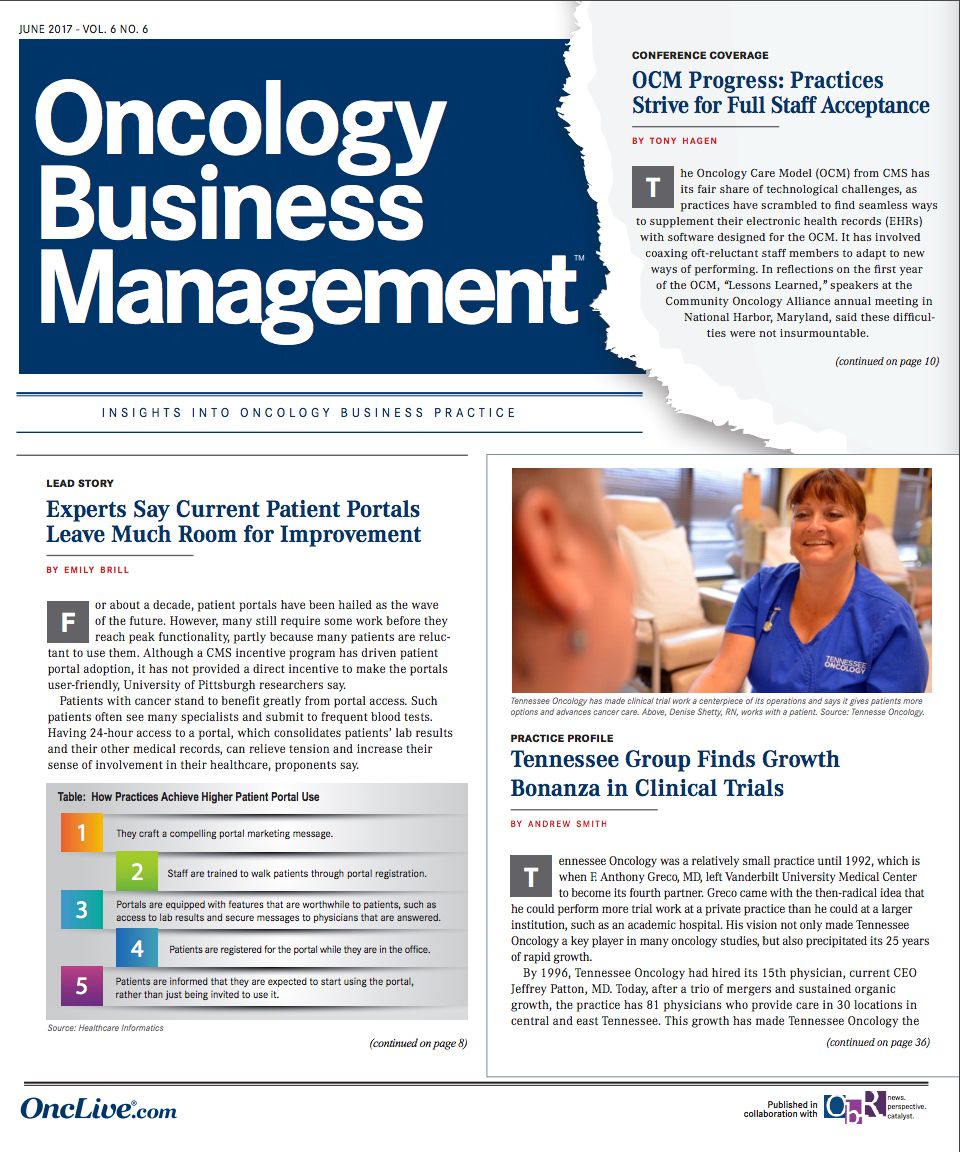Medical Tech Is a Marriage of Something Old, Something New
State-of-the-art technology is as valuable in oncology as it is everywhere else. However, new technology is not always available to providers, and when it is, it may not be used to its fullest potential.
OncLive Chairman,
Mike Hennessy
State-of-the-art technology is as valuable in oncology as it is everywhere else. However, new technology is not always available to providers, and when it is, it may not be used to its fullest potential. Older technology may be surprisingly adequate. In this month’s issue of Oncology Business ManagementTM, we look at these matters through the eyes of providers who wanted to get more out of old and new technology and who succeeded in doing so.
When researchers at Dana-Farber Cancer Institute wanted good quality biopsy samples for their DNA analysis project with Brigham and Women’s Hospital, they discovered that samples preserved in formaldehyde, embedded in para n wax, and stored in pathology labs were perfectly adequate for the large-panel genomic assays they were doing. When samples were rejected, it wasn’t because of the long-used storage method. More likely, it was because the available sample was too small or the tissue was cancer-free. Of the tumor samples that were useable, 73% were found to be clinically actionable.
Patient portals have been a key element of CMS’ Meaningful Use guidelines for the integration of electronic health records with patient-centered care. However, adoption of these systems for communicating important health information to patients has lagged; in some cases, patient portals are created but not supported by a commitment to use them to their fullest potential. Our story this month by Emily Brill explains that although patient portals can be used in many ways to improve patient engagement and achieve valuable results, the information they provide must be intelligible and useful, and physicians need to embrace these tools.
Brill unearthed an interesting fact during her investigation: the average user age on My Care Plus, the patient portal launched by McKesson Specialty Health, is 67. This belies the notion that older individuals, who make up the majority of patients with cancer, would not make good use of patient portals if they were provided and if they were truly engaging.
There’s a wealth of other coverage in this month’s Oncology Business ManagementTM. Our stories from the Community Oncology Alliance annual meeting held in April include articles about the debate over pharmacy benefit managers, lessons from the first year of the Oncology Care Model, and tips for ensuring oral drug adherence. We also present coverage from the World Congress conference in Philadelphia, held in March, including whether modern pathways are patient- or payer-centered and the direction in which accountable care organizations are heading.
In this month’s issue, as always, you’ll find valuable information and guidance on running your practice, compelling journalism, and inspiring success stories. Don’t miss a word of it!




